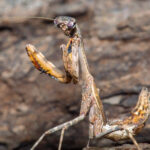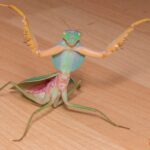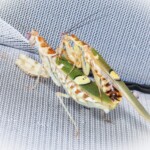Praying Mantis for Sale
Specimens shown are the ones currently in stock.
If you don’t see what you’re looking for, please message me, as I only list around 20% of what I actually breed.
I generally have ~50-60 species of Praying Mantis for Sale at any one time, so it’s always worth asking for anything specific (older mantids, specific species, and/or sex etc…)
The mantises or Mantodea are an order of insects that contains over 2,400 species and about 430 genera in 15 families, by far the largest family being the Mantidae (“mantids”). Mantises are distributed worldwide in temperate and tropical habitats. They have triangular heads with bulging eyes supported on flexible necks. Their elongated bodies may or may not have wings, but all have fore legs that are greatly enlarged and adapted for catching and gripping prey; their upright posture, while remaining stationary with fore arms folded, has led to the name praying mantises.
Mantises
are mostly ambush predators, but a few ground-dwelling species actively pursue their prey. They normally live for about a year; in cooler climates, the adults lay eggs in autumn, and die. The eggs overwinter, protected by their hard capsule, and hatch in the spring. Females sometimes practice sexual cannibalism, eating their mates after copulation, or occasionally decapitating the males just before or during mating.
The closest relatives of mantises are the termites and cockroaches (Blattodea), the three groups being included in the superorder Dictyoptera. Mantises are sometimes confused with stick insects (Phasmatodea), other elongated insects such as grasshoppers (Orthoptera), or other insects with raptorial fore legs such as mantisflies (Mantispidae).
Examples of Praying Mantis for sale
Praying mantids (Mantodea)
are not only apex predators with a ‘mystical’ status, but are sometimes regarded as a kind of oracle and, in some cultures, as omens associated with good or bad.
Historically, Mantodea influenced African, Greek, Egyptian, Japanese and Chinese cultures and they affected human culture in a variety of ways.
Some of these are coin designs, hairstyles, swords, death rituals, war strategies, advertisements, children’s books and even modern music.
Despite human fascination with mantids, this group of arthropods is unfortunately overlooked in terms of conservation and research.
A paper by Johnnie Van den Berg highlights the role of praying mantids in human culture and the historical relationships between humans and other arthropods.





















